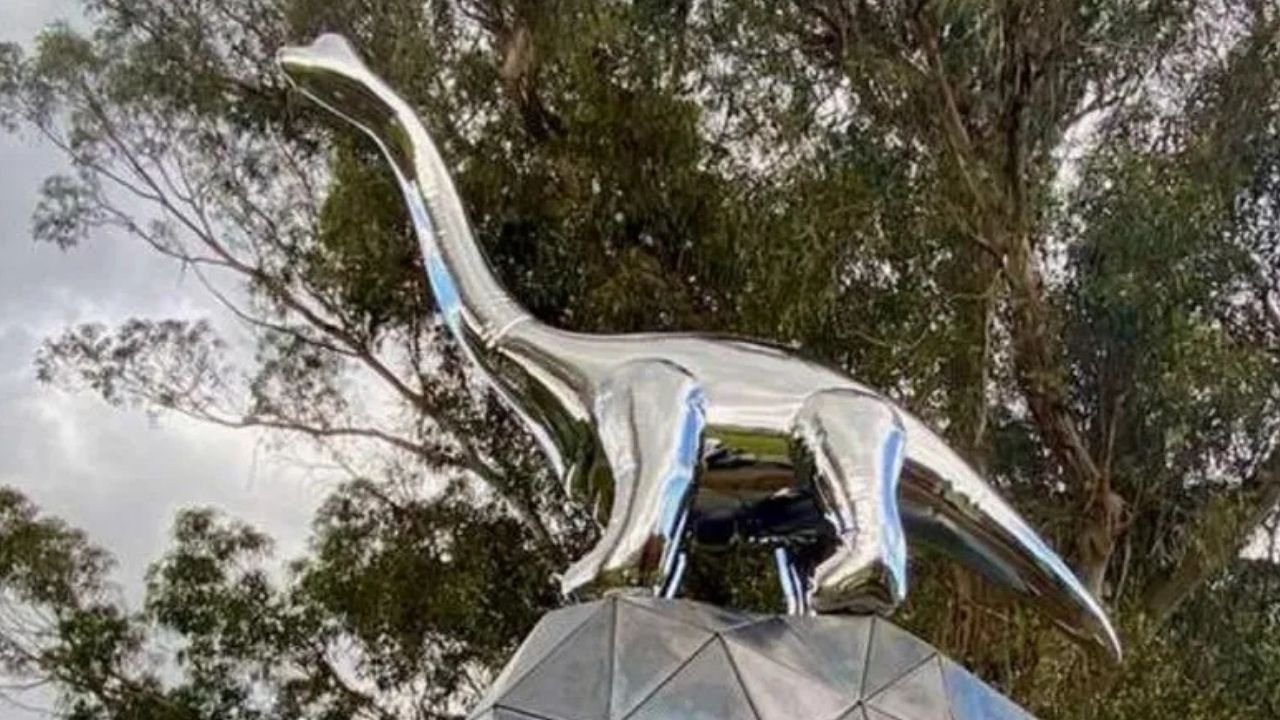
Boom Boom the Dinosaur: The Sculpture Stirring Art and Identity Debates in Taupō, New Zealand
In the heart of New Zealand’s scenic North Island, a towering stainless steel dinosaur is sparking fiery conversation and capturing imaginations. Known as Boom Boom, this seven-metre tall sculpture recently installed in Taupō Sculpture Park is quickly becoming one of the country’s most talked-about public art pieces.
Depending on who you ask, it’s either a fabulous masterpiece or an “eyesaur.” But one thing’s for sure — it’s impossible to ignore.

A Bold Artistic Statement in Taupō
Commissioned by the Taupō Sculpture Trust and crafted by Slovenian-born artist Gregor Kregar, Boom Boom is no ordinary installation. Its mirrored surface reflects the landscape around it, and its form — inspired by the long-extinct sauropods — aims to connect art with the prehistoric past.
“I wasn’t particularly surprised by the response,” said Kregar. “Public art often interrupts our daily routine, and that’s what makes it powerful. Besides, who really hates a dinosaur?”
The artist intentionally designed the sculpture to prompt reflection and stir conversation, and it’s doing exactly that. Since its unveiling, Boom Boom has become the subject of local headlines and online debates.
Controversy, Cost, and Cultural Clash
While some praise the dinosaur for generating public interest in art and bringing attention to Taupō, others are concerned about the price tag. The sculpture was funded through a $100,000 investment, finalized back in 2018, well before recent rate increases in the Taupō District Council.
“Why spend that kind of money when there are more urgent needs in the community?” one commenter posted.
But supporters argue the piece brings long-term value. It invites tourism, enhances the cultural landscape, and puts Taupō on the artistic map.
Ties to Taupō’s Volcanic Legacy
Critics have claimed the dinosaur has no local relevance, but Kregar strongly disagrees. Boom Boom stands atop a rock structure meant to symbolize Taupō’s volcanic history. The town, named after Lake Taupō — a massive caldera formed by a supervolcano eruption 1,800 years ago — has a deep geological legacy that connects naturally with prehistoric creatures.
In fact, sauropods, the massive herbivorous dinosaurs that inspired Boom Boom, are believed to have once roamed the New Zealand region.
Will Boom Boom Become a Beloved Icon?
Public reaction to art often evolves. What starts as polarizing can grow into affection. Kregar believes that Boom Boom has the potential to shift public opinion.
“You put the sculpture out there, and over time people start to connect with it emotionally. It becomes part of their identity,” he explains.
Kim Gillies, secretary of the Taupō Sculpture Trust, supports this view. “We didn’t choose something safe,” she said. “We chose something bold because bold gets noticed. And we think Taupō deserves that.”
The Bigger Picture: Why Public Art Matters
At its core, the Boom Boom debate underscores the role of public art. It’s not just about beauty — it’s about starting conversations, sparking imagination, and sometimes, challenging the status quo.
From controversy to community pride, Boom Boom is proving that art doesn’t need to be universally loved to be meaningful. In fact, it might be the very conflict that gives it power and purpose.




Average Rating